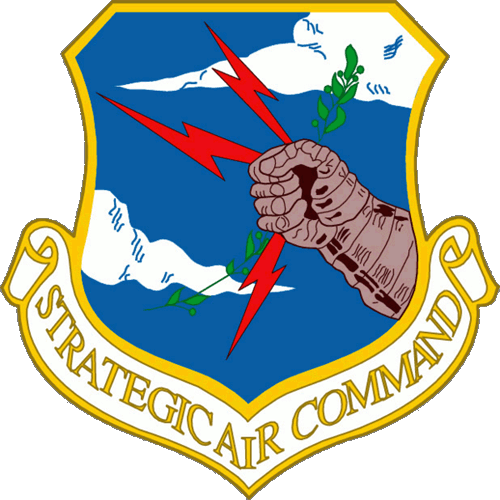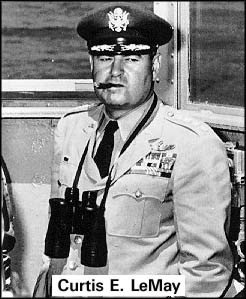STRATEGIC AIR COMMAND - Page 1

The STRATEGIC AIR COMMAND was the operational establishment of the UNITED STATES AIR FORCE in charge of America's bomber-based and ballistic missile-based strategic nuclear arsenal from 1946 to 1992. SAC also controlled the infrastructure necessary to support their operations (such as tanker aircraft to fuel the bombers and, until 1959, fighter escorts).
History
On 21 March 1946 the United States Army Air Forces (USAAF) was divided into three separate commands: Tactical Air Command (TAC), Air Defense Command (ADC), and Strategic Air Command (SAC). SAC's original headquarters was Bolling Field, the headquarters of the disbanded Continental Air Forces (First, Second, Third and Fourth) in Washington, DC. Its first commander was General George C. Kenney. SAC Headquarters moved to Andrews AFB, MD on Oct. 20, 1946.
SAC's original mission statement, expressed by General Carl Spaatz, then commanding general of the USAAF, was:
"The Strategic Air Command will be prepared to conduct long-range offensive operations in any part of the world, either independently or in co-operation with land and naval forces; to conduct maximum-range reconnaissance over land or sea, either independently or in co-operation with land and naval forces; to provide combat units capable of intense and sustained combat operations employing the latest and most advanced weapons; to train units and personnel of the maintenance of the Strategic Forces in all parts of the world; to perform such special missions as the Commanding General Army Air forces may direct."
That mission makes no specific reference to nuclear weapons, which in any case SAC did not yet possess. In the wake of World War II, the U.S. underwent a major drawdown of military forces, and the few USAAF units involved in the dropping of the atomic bombs were not spared.
SAC retained its organization and mission after the USAAF became the United States Air Force on 18 September 1947. On 9 November 1948, SAC moved its headquarters to Offutt Air Force Base near Bellevue, Nebraska.
 On October
19, 1948 Lt. General Curtis Emerson LeMay took over as commander of SAC, and set about a dramatic rebuilding
of the command's forces, as well as their mission. LeMay, who had masterminded the American attacks on the
Japanese mainland during the war (including the firebombing of Tokyo and other cities), was a staunch believer
in the power of strategic bombing: the destruction of an enemy's cities and industrial centers. LeMay believed
that the existence of the atomic bomb made this type of warfare the only workable strategy, rendering battlefield
conflicts essentially obsolete.
On October
19, 1948 Lt. General Curtis Emerson LeMay took over as commander of SAC, and set about a dramatic rebuilding
of the command's forces, as well as their mission. LeMay, who had masterminded the American attacks on the
Japanese mainland during the war (including the firebombing of Tokyo and other cities), was a staunch believer
in the power of strategic bombing: the destruction of an enemy's cities and industrial centers. LeMay believed
that the existence of the atomic bomb made this type of warfare the only workable strategy, rendering battlefield
conflicts essentially obsolete.
Under LeMay's command, SAC became the cornerstone of American national strategic policy during the Cold War with the Soviet Union. This policy which was based primarily on nuclear deterrence. In 1962 there were 282,723 personnel assigned (217,650 airmen, 28,531 civilians and 38,542 officers). SAC's motto became "Peace is Our Profession," symbolizing the intention to maintain peace through the threat of overwhelming force.
LeMay was not a great believer in mutually assured destruction(MAD): he felt strongly (particularly in SAC's early years, when Soviet nuclear capability was still in its formative stages) that SAC should be prepared to carry out a preemptive and overwhelming attack on the USSR before the Soviets had a chance to do the same to the United States.